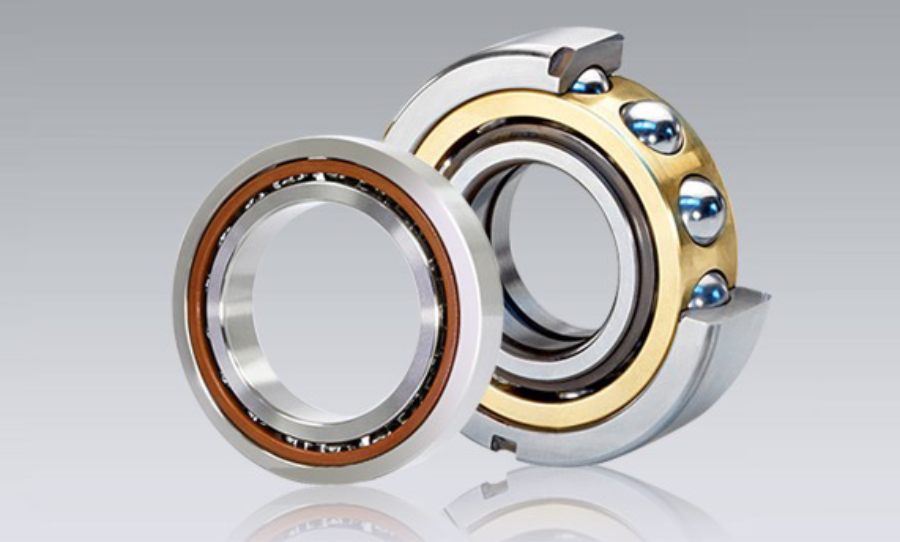It has Single row angular contact ball bearings, it can only bear the axial load in one direction, and will cause additional axial force when bearing radial load. And can only limit the axial displacement of the shaft or housing in one direction. Angular contact ball bearings have a contact angle of 40 degrees, so they can withstand large axial loads. Angular contact ball bearings are of non-separable design, with shoulders at different heights on both sides of the inner and outer rings. To increase the bearing’s load capacity, one of the shoulders is machined lower, allowing the bearing to fit more balls. Double row angular contact ball bearings can withstand larger radial loads and combined radial and axial loads and moment loads, limiting the axial displacement of the shaft on both sides. The inclination between the inner and outer rings of the double row angular contact ball bearing is limited in the components that are mainly used to limit the bidirectional axial displacement of the shaft and the housing. forces and moments on the bearing, and the maximum allowable inclination angle should ensure that excessive additional stress is not generated in the bearing. If there is an inclination angle between the inner and outer rings of the bearing, the service life of the bearing will be affected, and at the same time, the running accuracy of the bearing will decrease and the running noise will increase. And also have Double row angular contact ball bearings generally use nylon cages or brass solid cages. When installing the double row angular contact ball bearing, it should be noted that although the bearing can bear bidirectional axial load, if there is a gap for the ball on one side, care should be taken not to let the main axial load pass through the groove on the side with the gap. When the bearing is used, care should be taken to make the side raceway without the ball-loading notch bear the main load.

Sometimes referred to as “spindle bearings,” angular contact bearings are used in machinery that requires high accuracy and durability. Angular contact bearings have a much higher speed rating than radial bearings because of the nonstop contact of the balls to both rings.
The difference between these and deep groove ball bearings is that the bearing cross-section is designed asymmetrically. Angular contact ball bearings are designed to support loads whose line of application is not perpendicular to the bearing axis but rather at a certain angle to the perpendicular axis (contact angle).
Single row angular contact ball bearings: machine tool spindles, high frequency motors, gas turbines, centrifugal separators, front wheels of small cars, differential pinion shafts, booster pumps, drilling platforms, food machinery, indexing heads, repair welding machines, Low-noise cooling towers, electro mechanical equipment, painting equipment, machine tool slots, arc welding machines.
Double row angular contact ball bearings: oil pumps, roots blowers, air compressors, various transmissions, fuel injection pumps, printing machinery, planetary reducers, extraction equipment, cyclonic reducers, food packaging machinery, electric welding machines, electric soldering irons, Square box, gravity spray gun, wire stripping machine, half shaft, inspection and analysis equipment, fine chemical machinery

Model of Angular contact ball bearings
Lorem ipsum dolor sit amet, consectetur adipiscing elit. Ut elit tellus, luctus nec ullamcorper mattis, pulvinar dapibus leo.